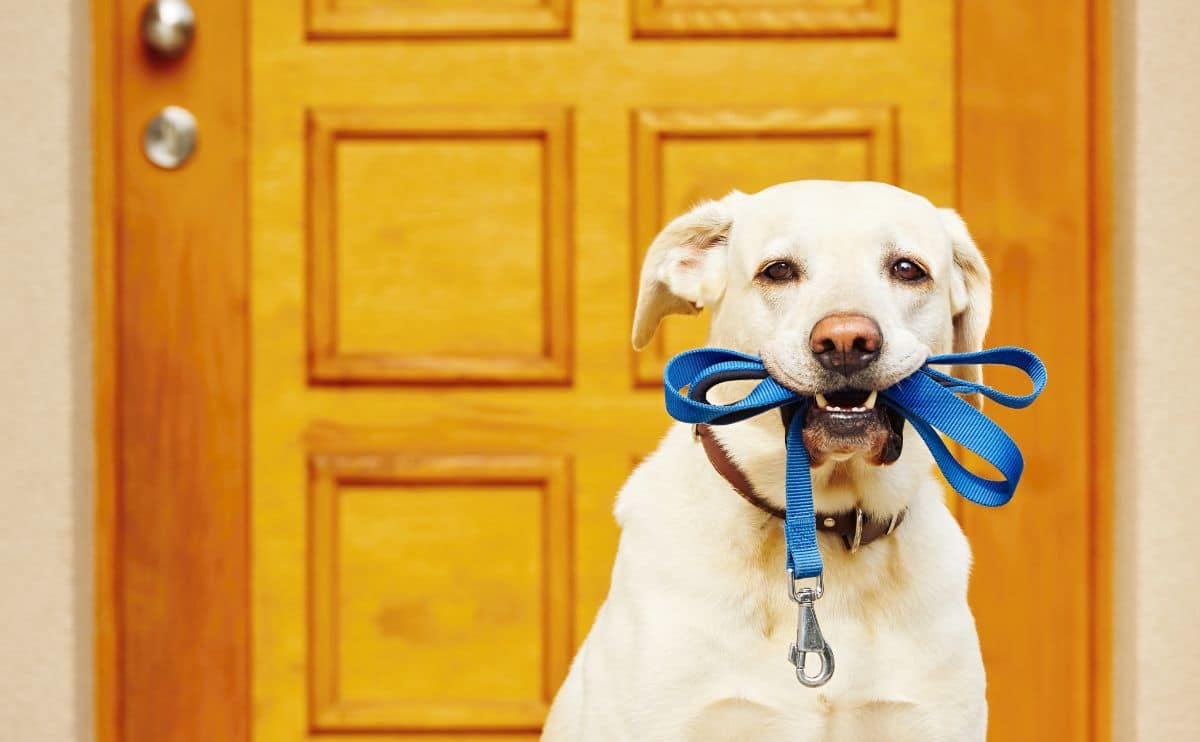Paws, Pedals & Pavement: The Best Dog Leash For Biking
When you purchase through links on our site, we may earn a commission. Here’s how it works.
Are you considering leashing your dog along while you’re out enjoying a bike ride? You’re not alone. Many owners want their pups to join them on their adventures. However, not all dogs can be cycling sidekicks. Also, you need to invest in a specially designed system to keep you and your pup safe. If you’re new to cycling with your pup or are looking for a better biking dog leash than the one you have, I’ve got you covered in my reviews of the best dog leash for biking.
Table of Contents
| Best Overall | Best Value | Rotating |
|---|---|---|
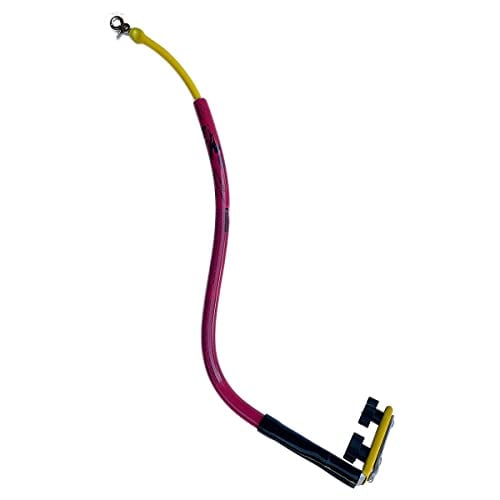 | 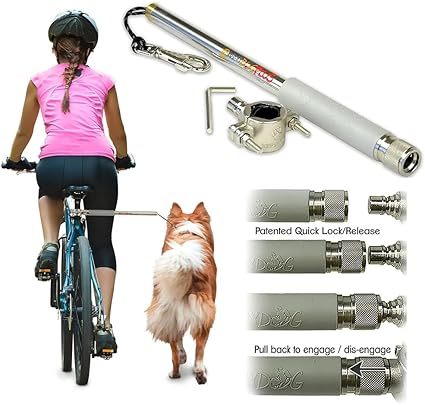 | 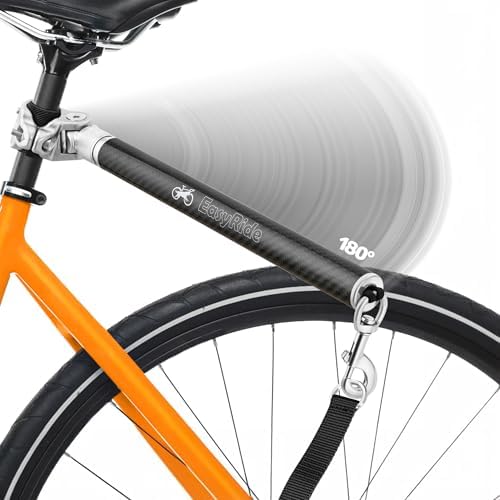 |
| Bike Tow Leash | Walky Dog | Malabi |
| View on Amazon | View on Amazon | View on Amazon |
| Read Review | Read Review | Read Review |
How Do Dog Bike Leashes Work?
Bike leashes for recreational riding work differently from hands-free leashes used for running or hiking with your pup. Flexible or bungee leashes won’t do with cycling because they don’t keep your dog from getting too close to your bike. You can’t simply wrap one of these leashes around you or a part of your bike.
That’s where a high-quality bike attachment for dogs is key. On one end of the attachment (usually a metal arm extension), you mount it to your bike, and the other end hooks onto your dog’s harness (preferable to a collar for biking). The goal is to allow enough space between your bike and dog to avoid entangling or collision.
6 Key Features To Look For In A Biking Leash For Dogs
Obviously, safety for you and your canine companion is of the utmost importance. So, you must consider several factors when choosing the best bicycle dog lead and bike attachment for dogs. The products I review in this article are compatible with most standard bikes.
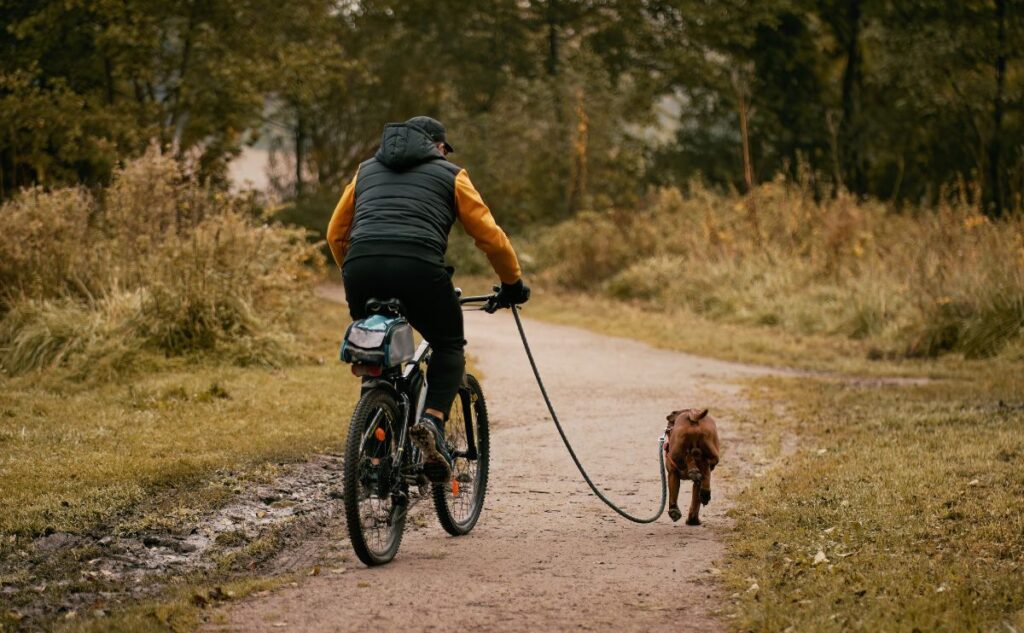
- Bike attachment: You’ll want an attachment with enough distance between your bike and your dog but not too much that your pup can run ahead of your bike.
- Mounting location: Many bicycle dog leads are designed to mount to your seat post, but some attach to other areas, like the rear axle. While it comes down to personal preference, keep in mind that attaching a leash lower on your bike rather than higher will enhance stability.
- Right or left side: Most dog bike leashes can be mounted on either side of your bike, but not all. Again, this comes down to what you prefer.
- Materials: Look for durable mounting hardware and a strong arm extension that’s sturdy enough to keep your dog attached.
- Ease of installation: A one-time installation isn’t a big deal, but if you plan on detaching the bike attachment for dogs frequently, you’ll want one that’s fairly easy to mount.
Is Your Dog Ready?
Jump down to my tips on preparing your pup to bike with you if yours hasn’t been your cycling sidekick before. Unless well-trained for the experience, many dogs aren’t ready to easily and safely run alongside you when biking and can put themselves and you in danger.
Best Dog Leash For Biking
I’ve based my top picks and reviews on several factors, including the quality of construction and materials, performance, ease of installation, customer feedback, pricing, and more.
Best Overall: Bike Tow Leash Review
The Bike Tow Leash is one of your best options, earning a 5-star safety approval from the American Pet Association. This bike attachment for dogs has a low mounting point on the frame, giving you added stability. It features a bent arm made of heavy-duty nylon and rubber that keeps your dog at a safe distance from the bike, and it’s not too long for your pup to run ahead or behind.
This device also requires no tools for easy installation. You can even add a coupler to take two (or more) dogs biking. While it’s expensive, many customers say it’s worth the price. Most users love the design and quality, some saying they’ve had it for a decade, and it’s still holding strong. Tip: Their website has an excellent bike compatibility chart to ensure the Bike Tow Leash will fit your cycle.
| Pros | Cons |
|---|---|
| Safe and durable design | Expensive |
| Bike and wheelchair compatible | Requires a pricey adapter to mount on the right side of your bike |
| Easy installation | |
| Works for dogs up to 185 pounds | |
| 5-star rating by the APA | |
| 2-year warranty | |
| Made in the USA |
Price
Best Value: Walky Dog Plus Dog Bicycle Leash Review
View on Amazon | View on Chewy
The Walky Dog Plus Bike Leash is a straight-arm leash made with military-grade paracord (550lbs pull strength), a high-carbon stainless steel rod, and an internal shock-absorbing system that helps keep your bike stable when your dog makes sudden movements.
It’s designed to mount to your bike’s seat post with jaw brackets for quick installation. You can even adjust the extension arm’s cord length to accommodate your dog’s height and the ideal space between your pup and the bike. It also features a sturdy stainless steel harness clip and a quick-release design to immediately disconnect your dog from the bike if needed.
| Pros | Cons |
|---|---|
| Fantastic value | Must purchase low-rider attachment for use with shorter dogs (mounts on rear wheel axle) |
| Adjustable length for varying dog sizes | Some complaints that the leash length is still too short when adjusted |
| Can mount on either side of your bike | Some users report that the seat post mounting clamp moves too much or requires frequent re-tightening |
| Shock-absorbing function keeps your bike stable | |
| Easy installation and quick release |
Price
Best Rotating: Malabi Easy Ride Rotating Dog Bike Leash Review
View on Amazon | View on Chewy
The Malabi Easy Ride differs from the other products I’ve reviewed here in that it features a rotating arm attachment that allows your pup more freedom to move from side to side around the back of the bike. While this design won’t work for every dog, like fast runners or pullers, many bikers find this product works like a charm.
Made of strong, lightweight carbon fiber, the arm attachment has a 180° dynamic rotating mechanism at the base of the mount. It is easy to attach to the seat post, and you attach the included leash to the other end of the arm. The arm attachment also features excellent built-in shock absorption and a special release mechanism that allows you to quickly attach and detach the carbon fiber arm.
| Pros | Cons |
|---|---|
| Gives your pup more freedom to move around | On the pricey side |
| Made of heavy-duty carbon fiber | Some users say it wasn’t safe for their fast or reactive dogs |
| Built-in shock absorption | Can’t adjust or stop the rotation |
| Easy installation and quick-release feature | |
| Comes with adjustable leash |
Do I Need A Specific Bike Dog Harness?
First, a high-quality dog harness is preferable to a collar to prevent choking and neck strain. A harness also offers more control over your pup. Any high-quality harness with a backor side leash attachment will work for cycling with your pup next to you.
Make sure it’s well padded to avoid skin chafing and lightweight to help prevent overheating. The ComfortFlex Sport Dog Harness is a fantastic option for all of these features. You may prefer a harness with side rings, like the .Joyride Harness 2.0 (recommended for Bike Tow Leash).
How To Prepare Your Pup For Cycling
Unfortunately, many dogs aren’t well-suited to be cycling sidekicks. Even if your pup is large enough and has the energy to keep up with you while biking, there are many things you’ll need to do to ensure that your furry friend will behave well to keep you both safe. It’s a good idea to consult your veterinarian to make sure your dog is healthy enough for biking because it’s very strenuous exercise.
Basic Dog Training
It’s essential that your dog already grasps basic obedience commands and can manage their behavior in the presence of distractions. Key commands for biking include responding to their name (to redirect their focus from distractions) and the ‘stay,’ ‘come,’ and ‘heel’ commands. Another major factor is leash training. You cannot take a leash-puller on a bike ride; otherwise, you’ll likely have an accident.
Expert Tip: If your dog is reactive, they’ll likely need extra training. An affordable way to get professional help with reactivity is through an online dog training course. Many have specific courses to train reactivity and even aggression out of your pup.
Bike Training Tips
Once you think your furry friend is ready, it’s time for bike training. To make it as successful as possible, have plenty of training treats (and patience) on hand.
- Introduce your dog to your standing bike before you get on.
- Attach your dog to the bike, and treat and praise them.
- Get on your bike.
- Slowly roll forward, and as soon as your dog begins to walk alongside the bike, offer praise and a treat. You may need to repeat this several times to get your pup used to walking beside the bike.
- Gradually increase the distance (and speed) to riding a block or two and even beyond. Remember to consistently offer praise and treats while your dog gets used to walking or running next to your bike.
- To make your ride as smooth as possible, add more commands to your arsenal, such as “slow,” “turn,” and “stop.”
Check out this video by Brandon McMillan, a world-renowned animal trainer, to see how he bike-trained a young Labrador Retriever.
More Safety Tips
Here are some additional factors to consider for a safe ride.
- Avoid biking with your dog in extreme heat or humidity. Dogs are at a higher risk of heat stroke than humans.
- Take plenty of water breaks. You’ll want to bring plenty of water for you and your pup. Consider investing in a dog water bottle.
- Monitor your furry friend for signs of overexertion, dehydration, or anxiety. This is particularly important on your first few rides together. Biking is more strenuous than running with your pup, so you may not know how their energy level will keep up.
- Avoid high vehicle and pedestrian traffic areas and places where you may encounter a lot of other dogs or wildlife to minimize distractions.
- When riding on asphalt, ensure it’s not hot to the touch to avoid burning your pup’s pads.
- Keep in mind that hard surfaces like cement or asphalt are hard on your dog’s joints and paw pads. If your pup’s pads become cracked or torn after a bike ride, you can use Musher’s Secret Dog Paw Wax to help protect and heal their pads.
What About Bikejoring?
Another way of cycling with your dog is bikejoring, but it’s very different from having your pup run alongside you and requires different equipment. Bikejoring is a fun dog sport in which one or more dogs pull a cyclist on a bike. It’s a modern twist on the classic sled dog mushing, where dogs pull a sled.
The dogs are secured to the bike using a specialized bungee cord lead and sled harness. Bikejoring can be enjoyed both as a recreational activity and a competitive sport. Check out Alpine Outfitters for a great selection of supplies, as well as this bungee leash and pulling harness.
Alternatives Ways To Take Your Dog Biking With You
If you have a small to medium-sized dog who can’t keep up with your biking prowess, you can still take your furball on bike rides. This is also the case with larger dogs who can’t swing running beside you. Of course, they won’t get the exercise, but they’ll likely still enjoy the outing. See my reviews of the best dog carriers for bikes, including baskets, backpacks, and trailers.

